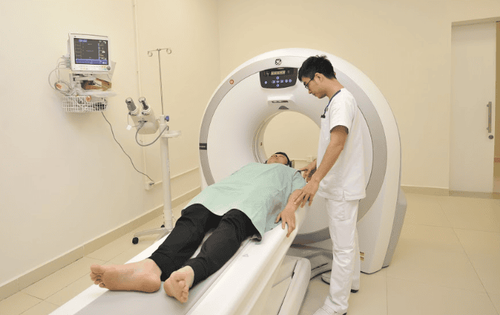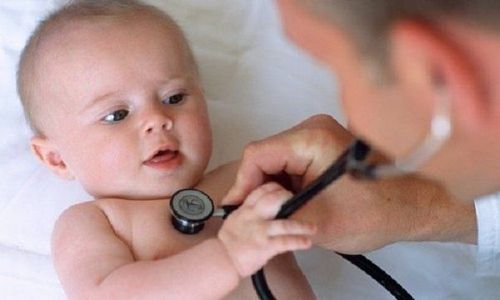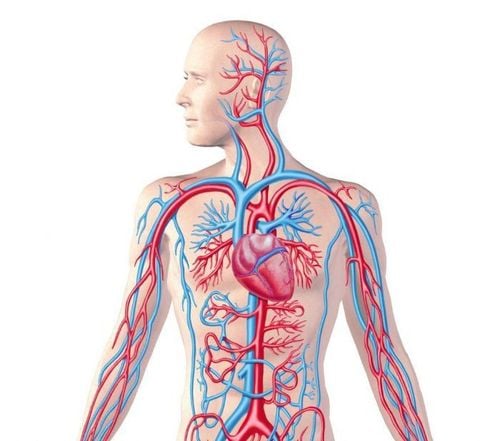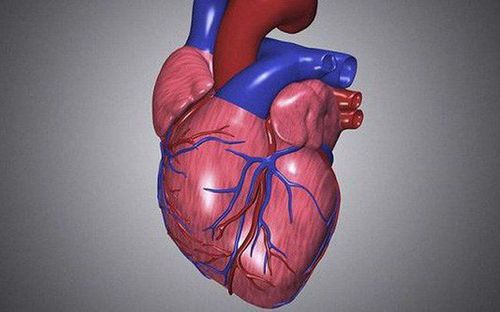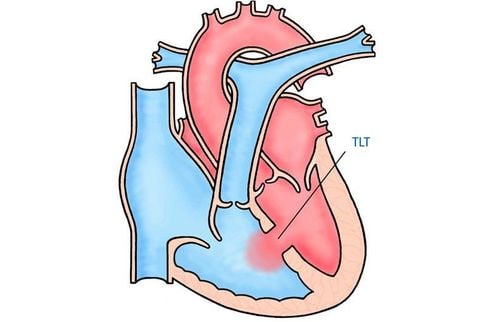This is an automatically translated article.
The article is professionally consulted by Cardiology & Thoracic Surgery doctors and Dr. Nguyen Luong Tan - Head of Cardiology Department - Cardiovascular Center - Vinmec Central Park International General Hospital.Atrioventricular channel is a defect in the atrioventricular septum and abnormality of the atrioventricular valves of the heart. The current total atrioventricular canal surgery differs in some details, but they all have a high probability of success, bringing back a stable life to the patient.
1. What is the atrioventricular canal?
A healthy heart is a powerful pumping system, capable of pushing blood through the circulatory system to carry oxygen and nutrients to different parts of the body. The heart has four chambers - two on the right and two on the left. Blood is pumped through these chambers and is regulated by valves that open and close like tiny doors, so that blood can move in one direction. After the blood moves to deliver oxygen to the organs, the blood is dark red because it is no longer rich in oxygen. Dark red blood returns to the heart through the right chambers and is pumped through the pulmonary artery into the lungs. In the lungs, it takes in more oxygen and becomes bright red. It then returns through the pulmonary vein to the left chambers and is pumped through the aorta and carried to the continuation organs.
In a heart with Atrioventricular Channel, several defects prevent the heart from working properly:
Atrial defect: A hole, which allows oxygen-rich blood (red) from the left atrium to mix with oxygen-poor blood (red). dark) in the right atrium. Ventricular septal defect: Another hole, which allows oxygen-rich blood (red) from the left ventricle to mix with oxygen-poor blood (dark red) in the right ventricle. Mitral or tricuspid valve abnormalities: These defects allow some of the blood to flow back into the atria.
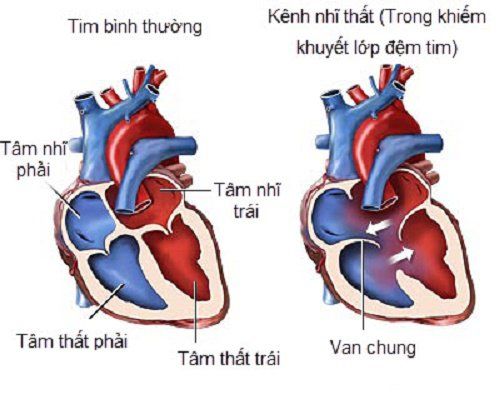
Hình ảnh kênh nhĩ thất trong khiếm khuyết lớp đệm tim
2. Classification of atrioventricular channels
There are two types of atrioventricular canals:
Partial atrioventricular canal: A hole exists between the atrial chambers and the left heart valve does not close completely. Complete atrioventricular canal: A large opening exists between the atrioventricular chamber and the ventricle chamber. Instead of two separate valves on the right and left sides, a large common atrioventricular valve is located between the atrioventricular and ventricular cavities and is often open.
3. Complications of the Atrioventricular Channel
The atrioventricular canal allows oxygen-rich and oxygen-poor blood to mix through openings in the heart and open valves causing the heart to have to hold more blood. These problems make the heart work harder, causing it to enlarge.
As a result, infants with Atrioventricular Channel may have difficulty breathing and the child may not develop normally. If left untreated, potential complications of the AV Canal also include:
Pneumonia: Left untreated, the AV canal can lead to repeated problems with lung infections. Cardiac dilation (enlarged heart): Increased blood flow through the heart forces it to work harder, causing it to grow larger. Congestive heart failure: The atrioventricular canal causes congestive heart failure, a condition in which the heart cannot pump enough blood to meet the body's needs. Pulmonary hypertension: Due to more blood going to the lungs than usual, the pressure in the pulmonary blood vessels increases. High blood pressure in the blood vessels in the lungs can cause lung damage. Bacterial endocarditis: a serious infection of the heart.
4. What Causes Atrioventricular Channel?

Kênh nhĩ thất chiếm khoảng 4 - 10 % tất cả các khuyết tật tim bẩm sinh
Other risk factors include maternal viral illness (such as measles) while pregnant, maternal diabetes, alcohol abuse during pregnancy, use of certain medications during pregnancy, and parental disease congenital heart defects. 14% of mothers with atrioventricular defects give birth to babies with the condition.
5. Signs and Symptoms Atrioventricular Channel
The size of the vents will affect the type and severity of symptoms, as well as the age at which they first occur. The larger the vents, the more severe the condition. If a child has a total atrioventricular canal, signs and symptoms usually become apparent during the first few weeks of life. Symptoms vary from child to child, but often include:
Shortness of breath or labored breathing Poor eating or weight gain Loss of appetite or difficulty breathing when eating Cyanosis: blue skin, lips or fingernails Pale skin, cold or damp Heart rate too fast. Complete atrioventricular canal can lead to congestive heart failure. If your child has congestive heart failure, signs and symptoms may include:
Fatigue, weakness, and lack of alertness Sudden weight gain or swelling of the legs, ankles, feet or abdomen Irregular or excessive heartbeat fast Cough or wheezing that doesn't go away, sometimes with white or pink sputum with blood. If a child has a partial AV channel, the signs and symptoms may not clear up for weeks, months, or even years. Some people with partial atrioventricular fibrillation don't show symptoms until they reach adulthood in their 20s or 30s, and they may develop conditions such as irregular heartbeats, congestive heart failure, and pulmonary hypertension. The pediatrician may also suspect a partial AV channel if the child hears a heart murmur with a murmur. Most heart murmurs are called mechanical murmurs. Many children with a functional murmur do not have heart defects and do not have heart problems. However, if a heart murmur is present along with other symptoms, your doctor may order other tests.
6. How is the atrioventricular canal diagnosed?
A clear diagnosis is the first step to treatment. A pediatric cardiologist may use a number of tests to confirm a diagnosis. These tests may include
chest X-ray Cardiac magnetic resonance imaging (MRI): checks blood flow and heart activity when the heart is working. Electrocardiogram (ECG or EKG): evaluates for abnormal heart rhythms (arrhythmia or arrhythmia) Echocardiogram (Echo) Cardiac catheterization.
7. How is the total atrioventricular canal treated?
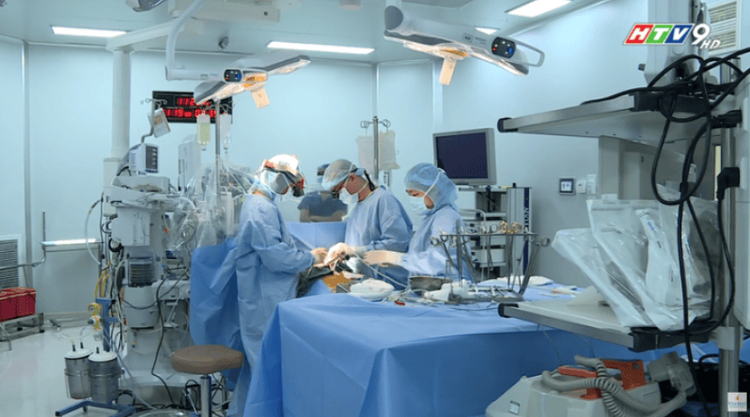
Phẫu thuật tim mạch tại Bệnh viện Đa khoa Quốc tế Vinmec
Once diagnosed, treatment may vary from person to person. Your doctor may prescribe medicine to help your heart and lungs work properly until your child is ready for surgery. Usually, children with AV Canal require surgical correction before six months of age. Children with both AV and Down syndrome may develop lung problems earlier than other children and may need surgery at an earlier age. Many children who have atrioventricular canal repair surgery live healthy lives, with activity levels, appetite, and growth returning to normal. There are surgical techniques that differ in some detail, but usually defects are closed with a patch made from a piece of pericardium or synthetic material. The patch is left in place, and the endocardium will grow over time. The surgery has a high probability of success. For partial atrioventricular channel defects, surgery also involves mitral valve repair. If repair is not possible, the valve may need to be replaced.
If the child has a complete atrioventricular canal defect, surgery also involves separating the common atrioventricular valve into two valves, one on the left and one on the right. After corrective surgery, your child will need lifelong follow-up care with a cardiologist who specializes in congenital heart disease. Potential complications later in life, such as regurgitation, may require additional treatment. Your child will also need to take antibiotics before dental and other surgical procedures to prevent infective endocarditis.
It is possible that the total atrioventricular canal requires banding surgery to narrow the pulmonary artery before 1-2 months of age to protect the lung or surgery before 3 months of age to be successful. Therefore, children need to be diagnosed early atrioventricular channel for monitoring and treatment. Vinmec can successfully diagnose and treat the total atrioventricular canal.
Children's cardiovascular surgery program at Vinmec Central Park is one of the largest and modern pediatric cardiology programs in the region. Patients coming to atrioventricular canal surgery at Vinmec hospital range in age from birth to adulthood. After complete surgical repair for atrioventricular canal disease, all patients were discharged from hospital stably and had similar lives to those without heart disease.
Please dial HOTLINE for more information or register for an appointment HERE. Download MyVinmec app to make appointments faster and to manage your bookings easily.




